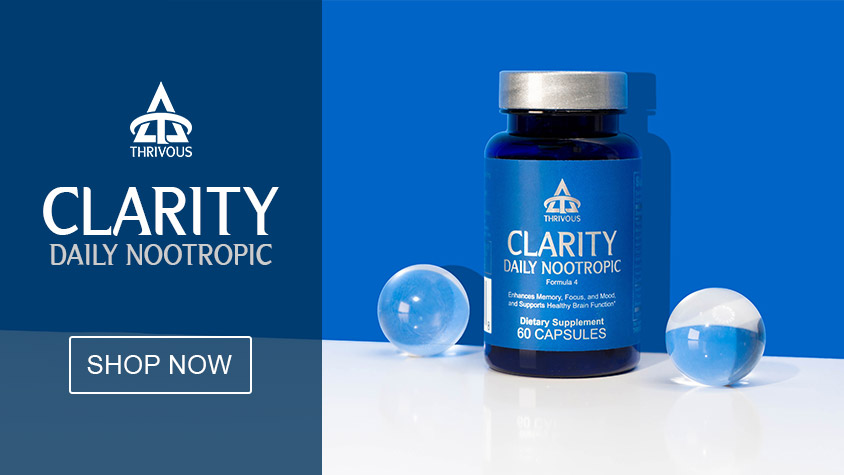Top 22 Smart Drugs in Science Fiction

I recently wrote about two popular science fiction smart drugs. NZT-48 is the nootropic smart drug featured in the Limitless movie and TV show. And Nexus is the nanotech smart drug featured in Ramez Naam’s science fiction trilogy. In addition to NZT-48 and Nexus, many other technologically enhanced drugs have been imagined by science fiction writers.
Some science fiction smart drugs are nootropic cognitive enhancers, used by healthy adults with socially responsible goals. And others, well, aren’t used by healthy people and plainly aren't so smart. But none is your grandparent’s prescription drug. All are extraordinary, for better or worse.
Here’s my list of the top 22 smart drugs in science fiction. I’ve ranked them by ascending awesomeness, according to my own personal judgment.
22) Moon Juice
Moon Juice is a vintage science fiction smart drug, found in Fredric Brown’s What Mad Universe. This isn’t just some futuristic green tea. A drink of Moon Juice gives you pleasant, very realistic hallucinations. For example, with Moon Juice, you can visit your beloved, who is in a spaceship orbiting the Moon, without leaving your chair – no space travel required.

21) Pan Galactic Gargle Blaster
In the hilarious and endlessly fascinating universe of Douglas Adams, the Encyclopedia Galactica only briefly mentions alcohol. It’s “a colourless volatile liquid formed by the fermentation of sugars notable for its intoxicating effect on certain carbon-based life forms.” But The Hitchhiker's Guide to the Galaxy says more.
The best drink in existence is the Pan Galactic Gargle Blaster. Its effect “is like having your brains smashed out by a slice of lemon wrapped round a large gold brick.” The Blaster contains alcohol and, as appropriate to a pan galactic drink, other quite exotic ingredients.
The famous Babel Fish can also be considered as a nootropic of sorts. It’s a tiny life form that takes residence in your brain and enables you to understand all languages.

20) The Spice Melange
The Dune universe was first created by Frank Herbert. And it’s now a very popular science fiction media franchise.
In Dune, a drug called “Melange” (or “the spice”) gives users a longer lifespan, greater vitality, and heightened awareness. To some people, the spice gives even precognition abilities. Melange is addictive, and withdrawal is fatal.
The only source of the spice Melange is the desert planet Arrakis. But harvesters must be careful of the giant sandworms that populate the planet.

19) Star Wars Glitterstim
In the Star Wars universe, there’s a smart drug called “Glitterstim.” It’s produced from the webs of the spice spiders found on the planet Kessel, which is controlled by the Galactic Empire.
Glitterstim gives users a temporarily heightened mental state, with telepathic abilities. Of course, there’s a catch. Glitterstim is highly addictive (even casual users can be hooked) and long term use severely damages the nervous system.

18) Robocop Nuke
Robocop 2 is a 1990 science fiction action film directed by Irvin Kershner (the first Robocop film was directed by Paul Verhoeven). In the film, a new designer drug called “Nuke” plagues Detroit. It’s a highly pleasurable and addictive narcotic developed by drug lord Cain, leader of the Nuke Cult.
Nuke provokes short intense feelings of energy and euphoria like crack cocaine. It comes in different types, with names like "Red Ramrod," "White Noise," "Blue Velvet," and "Black Thunder.” But even if someone calls it a “bath salt,” stay away!

17) Tasp and Boosterspice
Ringworld, the first Known Space novel by Larry Niven, describes a psychologically addictive device called “Tasp.” It makes people happy by remotely stimulating the pleasure centers of the brain. Tasp deprivation results in intense depression and psychosis, and eventually can induce suicide. The Known Space universe also features Boosterspice, a drug that restores or indefinitely preserves youth.

16) White Noise Dylar
In White Noise, by Don DeLillo, the experimental drug Dylar permits overcoming the fear of death by tweaking neurotransmitters. Whether the drug really works is not clear, but the main characters in the novel are desperate to get it. Undesired side effects include “outright death, brain death, left brain death, partial paralysis, other cruel and bizarre conditions of the body and mind.”

15) Snow Crash
Snow Crash is a cybernetic drug consumed by Virtual Reality (VR) avatars in Neal Stephenson’s Metaverse, as featured in the novel Snow Crash. We first encounter the drug in the famous VR club, Black Sun. Its owner suffers the nasty effects of the drug in both virtual and real reality.
Snow Crash, when taken by an avatar in the VR Metaverse, impacts the real person behind the avatar. It does so through psychoactive images that affect the “human operating system” in the brain. Then we learn that Snow Crash has a real counterpart, manufactured and distributed by a billionaire who wants to dominate the world. Hiro, the samurai pizza delivery hacker, comes to the rescue.

14) Neuroin Clarity
Neuroin is an illegal inhaled hallucinogen used by futuristic cop John Anderton, played by Tom Cruise in Minority Report. The film is based on a short story by Philip K. Dick, mentioned elsewhere in this article.
The name of the drug could stand for “new heroin” or “neural heroin.” People in the movie also call it “clarity.” But don’t confuse it with Thrivous Clarity! The effects of Neuroin are similar to those of heroin, and there are Neuroin addicts in the film.

13) Serum 114
Serum 114 appears in A Clockwork Orange by Anthony Burgess, and adapted for film by Stanley Kubrick. Serum 114 is given to the main character, Alex, to cause an intolerance for violence, sex, and even classical music (the three things that Alex loves most).
Another drug featured in the novel and the film is Moloko Plus. It’s a milk-based cocktail laced with “vellocet” (amphetamine), “synthemesc” (synthetic mescaline), and “drencrom” (adrenochrome), among other hallucinogenic substances.
The effects of Moloko Plus are opposite to those of Serum 114. The drug makes sex and violence more pleasant. And, in the case of Alex, it also enhances classical music.

12) Substance D
Substance D is a powerful psychoactive drug imagined by legendary author Philip K. Dick. It’s featured in his novel, A Scanner Darkly. The drug is also called "Slow Death", "Death," or simply "D.”
Though Dick is acclaimed as one of the finest science fiction writers, and the novel is considered science fiction, it doesn’t include much futuristic science. Substance D is a realistic street drug. It’s very addictive, and has severe withdrawal effects.
A Scanner Darkly feels like a fictional description of the real life of real drug addicts. And it’s inspired by Dick’s own experiences. “Everything in A Scanner Darkly I actually saw," said Dick.

11) Battlestar Galactica Stims
In the Battlestar Galactica TV show, space fighters can boost alertness and attentiveness with stimulants, or “stims.” Stims work as advertised and permit space pilots to stay fully awake and focused for days. But there are still undesired side effects from being sleep deprived, such as bursts of aggressive and violent behavior.
It’s worth noting that fighter pilots in the real world often use stimulants (amphetamines) to stay alert. So this part of Battlestar Galactica may not be far from reality.

10) Vurt
Vurt is featured in the science fiction novel Vurt by Jeff Noon. It’s a hallucinogenic drug that sends users into virtual, alternate worlds.
It isn’t very clear how Vurt works. But it’s ingested by sucking on a feather. And the effects of the drug are world-changing.
Vurt feathers are color-coded. And the spectrum ranges from bland to extremely powerful. Yellow Vurt feathers, illegal and difficult to find, project users into dangerous game worlds from which it may be very difficult to come back.
Vurt is a prominent feature of Noon’s fictional world. And it’s not the only drug featured in the universes created by his imagination. The author says, “I’ve invented drugs such as Vurt, Metaphorazine, Lucidity, Wave, Haze and many more.”

9) The Red Pill and Blue Pill
In the Matrix universe, the Red and Blue pills represent an option. The red pill is the choice to perceive the world as it really is. The blue pill is the choice to hide behind a comforting delusion. We all know that Neo chooses the Red pill and accepts the burden of knowing that the world we perceive is really a simulation generated by machine overlords.
It’s worth noting that conceptually similar devices were used by Lewis Carrol in the classic, Alice in Wonderland. Remember the "drink me" potion that shrinks her, and allows her to see a new world?

8) Distress Disinhibitors
The novel Distress, by Greg Egan, features mild smart drugs called “disinhibitors” or “Ds.” They’re a substitute for alcohol, and used as a social lubricant. The main character uses Ds now and then. But he prefers not to concede “that human beings were physically incapable of communicating or relaxing without the aid of psychoactive drugs.”

7) Soma Brave New World
The granddaddy of science fiction smart drugs is certainly Soma. It’s featured in Brave New World (1932) by Aldous Huxley. Soma is a soothing, happiness-producing, hallucinogenic drug.
Besides calming the mind and producing feelings of well-being, Soma allows users to escape from reality. “There is always soma, delicious soma, half a gramme for a half-holiday, a gramme for a week-end, two grammes for a trip to the gorgeous East, three for a dark eternity on the moon …”
In Brave New World, authorities use Soma to keep people sedated. It’s very addictive. In a state of permanent bliss, they become uninterested in rebellion against the oppressive state. Some see parallels between Soma and addictions unofficially encouraged in contemporary society, such as mindless consumerism and overuse of social media.

6) NZT-48 Limitless Pill
Featured in the Limitless movie and in the Limitless TV show, NZT-48 gives users a spectacular boost to brain function. And that radically improves memory, focus, and intelligence.
For example, NZT-48 users are able to access all of their memories, including memories that had been long forgotten (apparently). They’re able to correlate all of their memories with all available information to solve any problem. And they do it, apparently out of thin air, without effort.
See my previous article for more about NZT-48.

5) Orion’s Arm Pourmurmide
The sprawling Orion’s Arm universe has been imagined by a collective of science fiction writers and enthusiasts. In it, there’s a wide choice of nootropics and drugs, including programmable nano-drugs able to enhance or alter consciousness. There are “narco-symbionts,” which are genetically engineered symbiotic life forms that provide a regular supply of pleasure-inducing substances. And there are “ad-drugs” used for advertising, which give users a strong desire for a product.
More exotic nootropics found in the Orion’s Arm universe include Pourmurmide. It’s a nanodevice-drug that rewires the brain of the recipient to experience every situation as meaningful and filled with spiritual power.

4) Ware Tetralogy Merge
As noted above, Ramez Naam’s Nexus nanobots are capable of wireless communications with other Nexus nodes in another brain. That opens the door to telepathic communications and the fusion of single minds into group minds. But Rudy Rucker is even more ambitious.
In the *Ware Tetralogy (Software, Wetware, Freeware, Realware), Rucker describes an addictive and very illegal drug called “Merge.” It’s able to dissolve and reorganize human tissues. And it permits the temporary fusion of not only minds, but also bodies. We first hear of Merge in the setting of an underground lab built by a rogue biochemist on the Moon.
Rucker, a child of the sixties, often mentions neuroactive drugs in his fiction. And, in general, the brain and intelligence are prominent themes throughout his work. For example, the main character Cobb Anderson receives an offer of immortality from his AI children. And some other characters capture a “brainsurfer” and encourage each other to “eat his brain.”

3) Mother Retrovirus
In Greg Egan’s short story “Chaff,” published in the collection Luminous, drug cartels manufacture and sell a neuroactive virus called “Mother.”
It begins when a rogue biological engineer joins El Nido de Ladrones (The Nest of Thieves), an underground biotech research center. The engineer creates an enhanced version of a virus. It reconfigures neural networks in the brain, making them hugely plastic and changeable.
The new virus allows everyone to become who they want to be. And the villain (or perhaps he isn’t a villain?) eventually unleashes the modified virus.
In a subsequent novel, Distress, Egan imagines that “El Nido de Ladrones had been H-bombed in 2035.” That’s perhaps “because some kind of ‘dangerously liberating’ neuroactive virus had been invented there.”

2) Nanotech Mods
In Quarantine by Greg Egan, there’s a whole industry of nanotech-based nootropics (or “mods”). They permit controlling and enhancing all sorts of cognitive performance processes, including emotions. “For more than twenty years, Axon has been helping you to attain life’s riches,” a typical ad goes. “Now, we can help you to want them!”
Some mods provide users with machine-like focus. Say “goodbye” to attention deficit hyperactivity disorder (ADHD). The main character stays focused (“primed”) on his security work all the time. But eventually otherworldly quantum effects (also triggered by a mod that acts on the quantum state of the brain) push him out of the primed state.
Mods can be compiled from software specs in nanotech labs. While the mods sold by companies like Axon are perfectly legal, of course there are labs specialized in compiling illegal mods too.

1) Nexus
In the Nexus trilogy, rogue nanotech researchers develop Nexus, a drinkable and neuroactive substance. Its name comes from nanobots that colonize the brain and boost in-brain communications and coherence. The nanobots are also capable of wireless communications with other Nexus nodes in the same brain, or even in another brain. And that opens the door to telepathic communications and the fusion of single minds into group minds.
Nexus was written by Ramez Naam. The last book in the trilogy, Apex, won the Philip K. Dick award in 2015. See my previous article for more about Nexus.

The Real Smart Drugs
Science fiction is cool. But the smart drugs of science fiction aren’t real – unfortunately or fortunately, as the case may be. No pill in our world, so far, can network your brain to a computer. No drug can, yet, transform your mind into superintelligence.
Despite that dose of reality, don’t be tempted to think that nootropic smart drugs exist only in science fiction. To the contrary, scientists have studied many nootropic drugs and dietary supplements. And studies suggest that healthy individuals actually can use real nootropic supplements to enhance various aspects of cognitive performance. Learn more, find examples, and see studies at the links.
More Articles
Read more articles at Thrivous, the human enhancement company. You can browse recent articles in Thrivous Views. See other Nootropics articles. Or check out an article below.
-
Purpose Is Important for Health and Well-Being
A recent study by psychiatrists and neuroscientists at UC San Diego School of Medicine has found that the presence of ...
-
High Intensity Exercise Disrupts Aging Patterns
Physical activity has been shown to improve mood, cognition, heart health, and aging. Athletes tend to live longer than the average ...



